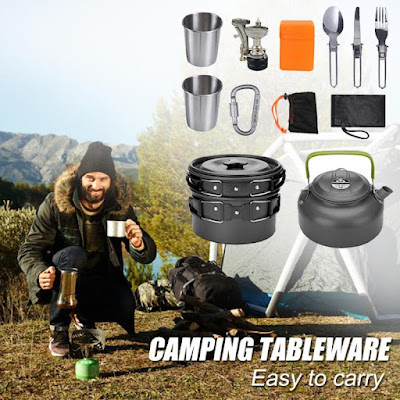Fly fishing is a popular sport that involves the use of artificial flies to catch fish. It is a unique and enjoyable activity that can be done in freshwater and saltwater environments. The method of fishing requires patience skill and precision making it a challenging activity that many people find rewarding.

Fly fishing has a rich history that spans century making it a captivating sport for anglers around the world. The origins of fly fishing can be traced back to ancient times, with evidence of Roman anglers using artificial flies to entice trout. Over the years, the sport has evolved, and various techniques and tactics have emerged to enhance the angler's success. Today, fly fishing is not limited to trout fishing alone but extends to diverse species like bonefish. As a tactical fly fisher, it is crucial to choose the right flies that match the specific insects present on the water during your fishing dates. Visiting a reputable fly shop can provide you with expert advice and a wide selection of flies to choose from. So, whether you are a seasoned angler or new to the sport, there is no shortage of proof that fly fishing is a rewarding and enduring pursuit 's .
History of Fly Fishing:
The history of fly fishing dates back to ancient times when the Macedonian fisherman used an artificial fly to catch fish in the Astraeus River. In the 15th century the first written record of fly fishing was made in a book called "The Treatyse on Fysshynge with an Angle" written by Dame Juliana Berners. The book described the use of a rod line and hook to catch fish.
The history of use of artificial flies became more popular in the 19th century when fly fishing became a sport that was enjoyed by the aristocracy. Charles Ritz a French hotelier and angler popularized fly fishing in the 20th century. He designed a lightweight fly rod that made it easier to cast the fly which led to the development of modern fly fishing equipment.
What is the point in fly fishing?
The point of fly fishing is to catch fish using an artificial fly that mimics the appearance and movement of insects or baitfish that fish might feed on. However for many fly anglers fly fishing is more than just catching fish. It is a way to connect with nature challenge oneself and appreciate the beauty of the environment. Fly fishing requires skill and finesse and it can be a meditative and relaxing activity that allows anglers to escape from the stresses of daily life. Ultimately the point of fly fishing can be different for each person who practices it but it is often a combination of the joy of catching fish and the experience of being in nature.
Fly Fishing Equipment:
Fly fishing equipment has evolved over the years and today it includes a wide range of specialized gear that is designed to make the experience easier and more enjoyable. The most important piece of equipment in fly fishing is the fly rod which is designed to be lightweight and flexible allowing the angler to cast the fly with precision and accuracy. The fly line is another crucial piece of equipment that is designed to be heavy enough to cast the fly but also thin enough to be virtually invisible to the fish .
Fly fishing reels are designed to store the fly line and to control the tension on the line when a fish is hooked. They come in a range of sizes and styles with some designed specifically for freshwater and others for saltwater environments. Fly fishing waders and boots are essential for anglers who want to fish in streams or rivers providing protection from the water and allowing the angler to move freely while casting.
Flies Used in Fly Fishing:
The flies used in fly fishing are made to mimic the insects or baitfish that fish might feed on. They are tied from a range of materials including feathers fur and synthetic materials. Flies come in a wide range of sizes shapes and colors with some designed to float on the surface of the water and others to sink to the bottom.
The most common types of flies used in fly fishing include dry flies, wet flies nymphs and streamers. Dry flies are designed to float on the surface of the water mimicking adult insects such as mayflies and caddisflies. Wet flies are designed to sink below the surface of the water and imitate insects in their larval or pupal stage. Nymphs are designed to imitate aquatic insects such as mayfly nymphs while streamers are designed to mimic baitfish.
Where to Fly Fish:
Fly fishing can be done in a wide range of environments from small streams and rivers to large lakes and saltwater flats. Some of the most popular places to fly fish include Yellowstone National Park the Catskills the Rocky Mountains and the Florida Keys.
In addition to natural environments many people also enjoy fly fishing at specialized fishing lodges and resorts. These facilities offer access to prime fishing locations experienced guides and high-quality equipment. Some of the most popular fly fishing lodges and resorts include the Sage Lodge in Montana the Teton Springs Lodge and Spa in Idaho and the South Fork Lodge in Wyoming.
Where is fly fishing most popular?
Fly fishing is a popular sport around the world and it can be practiced in both freshwater and saltwater environments. However there are several regions where fly fishing is particularly popular including:
United States: Fly fishing is a beloved pastime in the United States of america with many anglers heading to popular locations such as Montana Wyoming Colorado and the Pacific Northwest to fish for trout salmon and other species.
Europe: Fly fishing is also popular in Europe particularly in countries such as the United Kingdom Norway Sweden and Iceland where anglers can fish for Atlantic salmon sea trout brown trout and grayling.
South America: Argentina is one of the top destinations for fly fishing in South America where anglers can catch trout and salmon in the Andes Mountains. Chile Brazil and Venezuela are also popular fly fishing destinations.
New Zealand: New Zealand is known for its clear pristine rivers and streams which make it a popular destination for fly fishing. Anglers can catch brown and rainbow trout in many of the country's rivers.
Canada: Canada is home to a vast network of rivers lakes and streams making it a top destination for fly fishing. Anglers can catch a wide range of species including salmon trout pike and muskie.
Fly Fishing More Than Just a Sport It's an Experience
Fly fishing is often revered for its tranquility precision and connection to nature. While it is undoubtedly a sport that requires skill and technique fly fishing goes beyond the act of casting a line and catching fish. It encompasses an entire experience that captivates anglers and leaves a lasting impression. From the serene surroundings to the meditative rhythm of casting fly fishing offers a unique journey that combines adventure solitude and a deep appreciation for the natural world.
The Symphony of Nature Mindful Connection Solitude and Reflection Environmental Stewardship.
Can beginners fly fish?
Yes beginners can absolutely learn to fly fish! While fly fishing can be a challenging sport to master it is also very accessible to beginners who are willing to put in the time and effort to learn. There are many resources available to help beginners get started including instructional books videos and classes.
One of the first things beginners need to learn is how to cast a fly rod which can be a bit different from casting a traditional fishing rod. But with practice and guidance even novice anglers can learn to make a good cast. Additionally it is important for beginners to learn about the equipment needed for fly fishing including the rod reel line and flies.
One great way for beginners to learn the basics of fly fishing is to take a class or hire a guide. Many outfitters offer fly fishing lessons and guided trips that can teach beginners the fundamentals of the sport, including how to cast tie knots and choose the right fly for the situation.
Ultimately the most important thing for beginners is to have patience and persistence. Like any new skill fly fishing takes time and practice to master. But with dedication and a love for the sport beginners can quickly become competent fly anglers and enjoy all the rewards that come with this exciting and rewarding pastime.
The Best Fly-Fishing Gear
When it comes to finding the best fly-fishing gear there are many great resources available online. Here are a few important links to get you started:
Orvis - Orvis is a well-known and respected name in the world of fly fishing, and their website is a great resource for all things related to the sport. They offer a wide range of fly-fishing gear including rods, reels, lines, waders, and more.
👇
FishUSA - FishUSA is an online retailer that specializes in fishing gear including a wide selection of fly-fishing equipment. Their website offers a large selection of rods, reels, lines, and other gear from top brands.
👇
Cabela's - Cabela's is a popular outdoor retailer that offers a wide range of fishing gear including fly-fishing equipment. Their website offers a large selection of rods, reels, lines, and other gear as well as helpful resources such as buying guides and instructional videos.
👇
Trout's Fly Fishing - Trout's Fly Fishing is a Denver-based fly shop that offers a great selection of gear and accessories as well as guided trips and instructional classes. Their website is a great resource for fly-fishing gear and they also offer a fly-fishing blog with helpful tips and advice.
👇
The Fly Fishers - The Fly Fishers is an online retailer that offers a wide selection of fly-fishing gear including rods, reels, lines, and flies. Their website also features helpful resources such as buying guides and instructional videos.
👇
Conclusion
Fly fishing History, is a challenging and rewarding sport that requires patience skill and precision. With the right equipment and techniques it is possible to catch a wide range of fish


.webp)
.webp)
.webp)
.webp)
.webp)
.webp)


